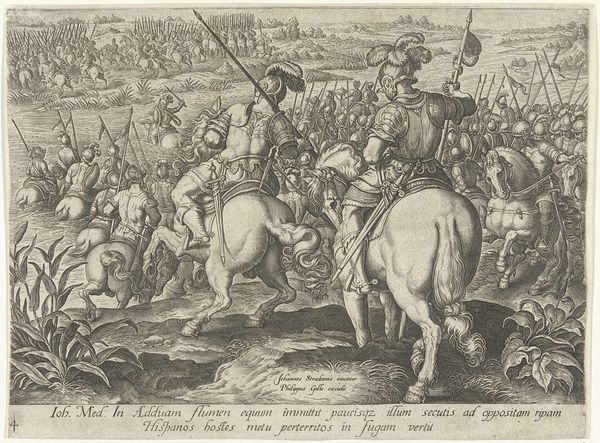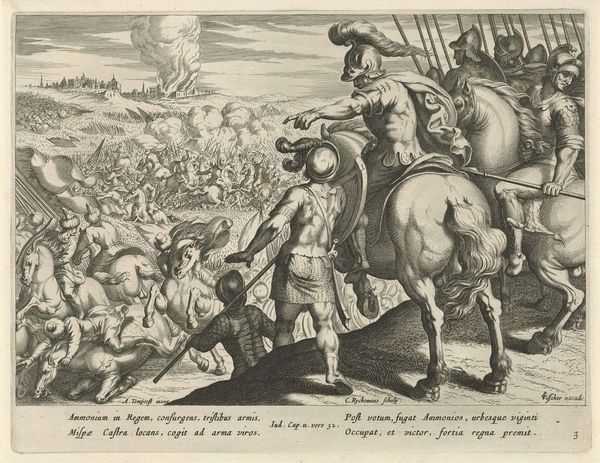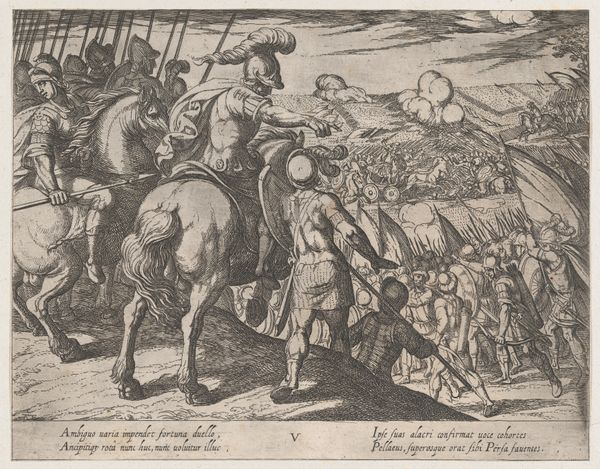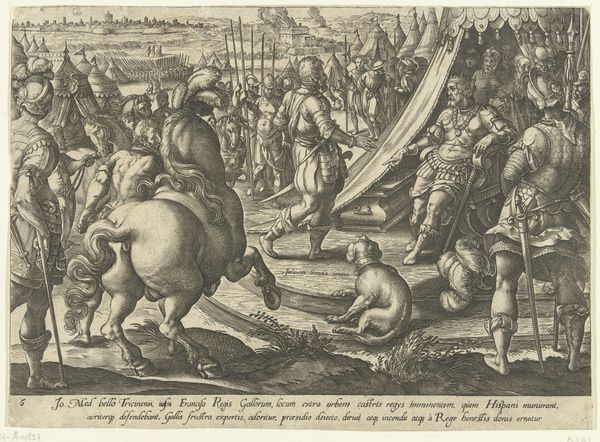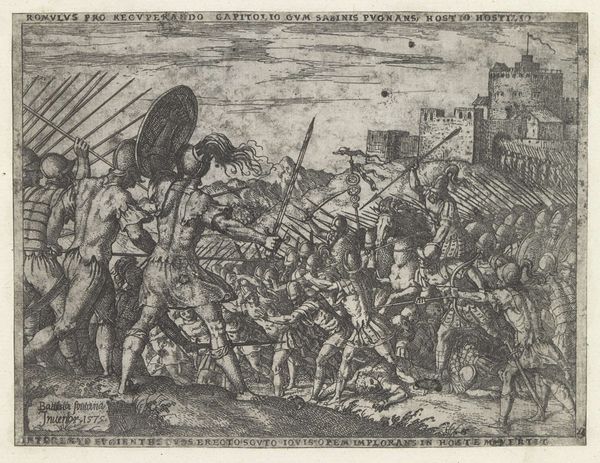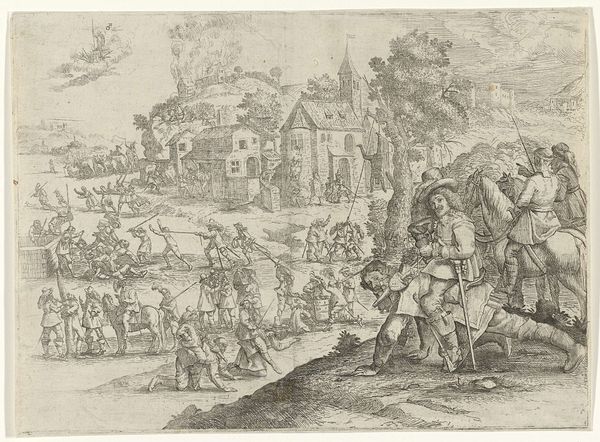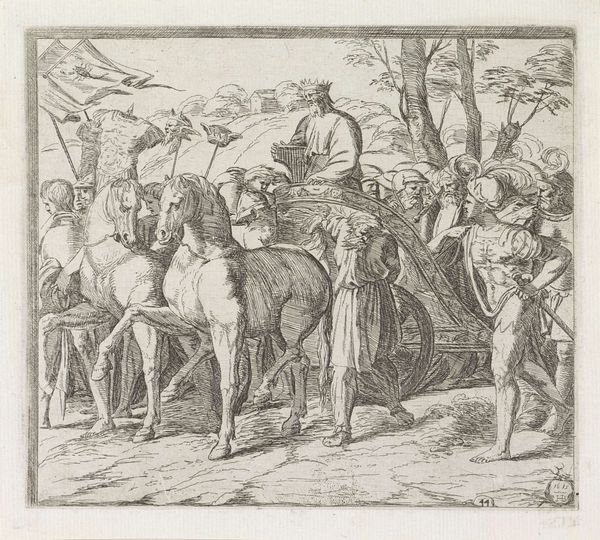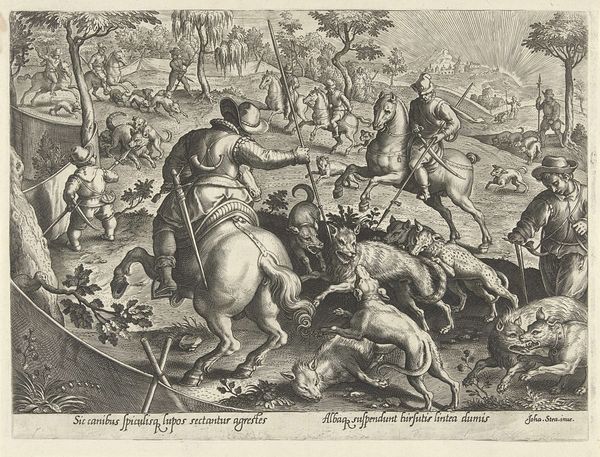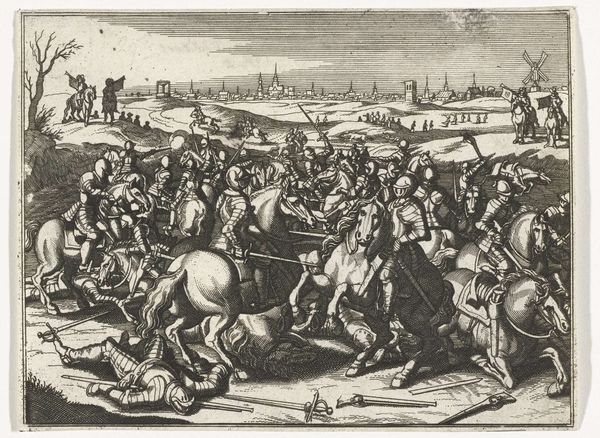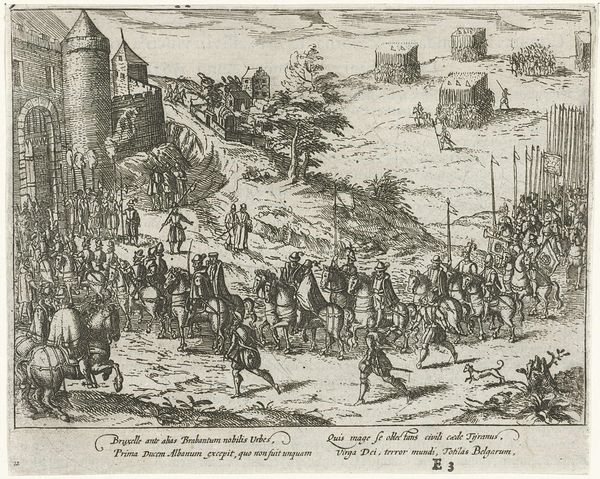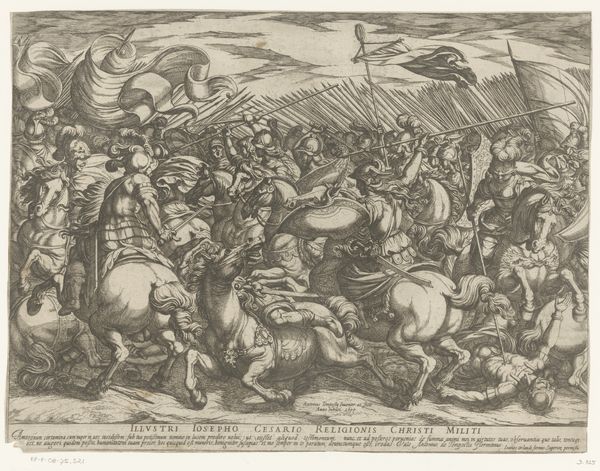
print, engraving
#
narrative-art
#
pen drawing
# print
#
landscape
#
figuration
#
line
#
genre-painting
#
history-painting
#
northern-renaissance
#
engraving
Dimensions: height 220 mm, width 302 mm
Copyright: Rijks Museum: Open Domain
Editor: We're looking at Hendrick Goltzius' engraving, "The Death of Giovanni de' Medici," created between 1576 and 1583, currently at the Rijksmuseum. It is a complex, busy scene. I’m struck by the contrast between the dense crowd of soldiers and the seemingly detached landscape in the background. What is your take on this piece? Curator: The immediate reading emphasizes the linear precision, particularly in rendering the intricate details of the soldiers’ armaments and attire. Consider the arrangement of forms; the composition exhibits a carefully structured recession into space, utilizing the repetition of shapes—helmets, spears, tents—to establish a visual rhythm. Do you observe how the foreground figures are given volumetric weight, while the background dissolves into a tapestry of lines? Editor: I do. It's like he uses line weight to define depth, focusing on the detail up front. So, you’re suggesting that the relationship between the foreground and background and their stylistic treatments defines the reading of this engraving? Curator: Precisely. Note the interplay between light and shadow, created solely through the density and direction of the engraved lines. It’s not just representational; it is a deliberate artistic choice to construct form and volume within the limitations of the medium. The abstraction inherent in the lines forces us to consider them not just as conveyors of content, but as essential components of the work's formal language. Editor: Interesting. I was focusing on the narrative aspect but viewing it through a formal lens helps reveal the technical skill and conscious artistry. Curator: Yes, appreciating this print requires us to look at its formal qualities. Perhaps even reading it as the complex articulation of form and medium within a deliberately conceived visual space.
Comments
No comments
Be the first to comment and join the conversation on the ultimate creative platform.

